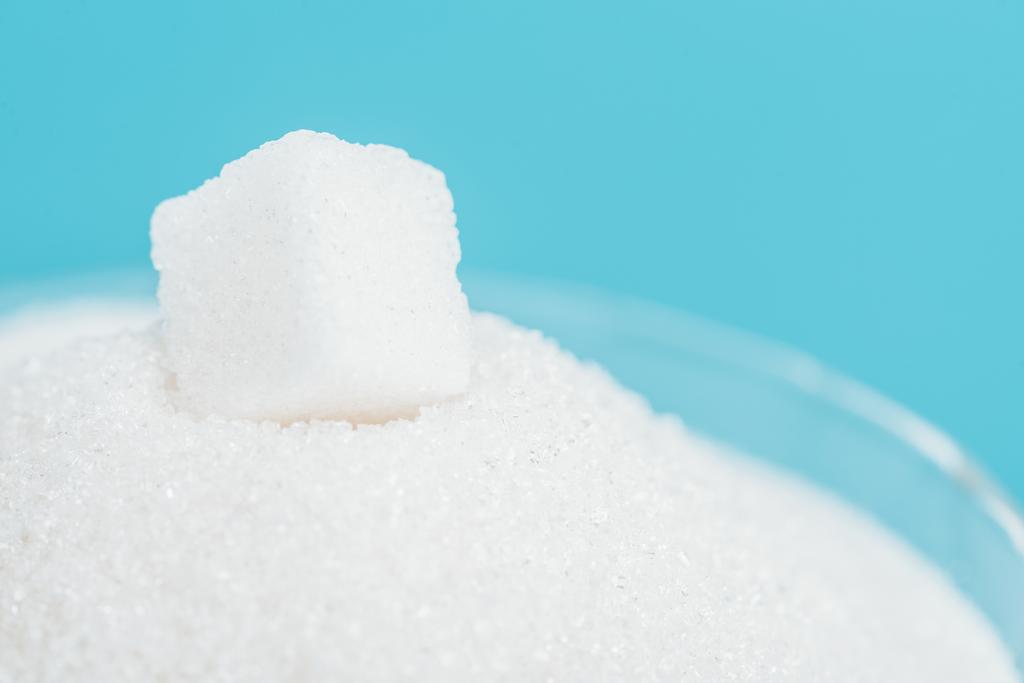Advantame (E969) is an artificial sweetener that can be found in many foods. But how dangerous is E969 for health? Here we show which effects of Advantam are known and which limit values there are.
Advantame is a fairly new substance that companies have only been allowed to use in food since 2014. It must be declared and is behind the E number E969. What is special about Advantame is its high sweetening power: Advantame is the sweetest additive permitted for food. But the substance has other advantages that make it popular with the food industry.
Advantame: The sweetest sweetener on the market
The artificial sweetener stevia is 30 times sweeter than regular table sugar, and the sweetener aspartame is 185 times sweeter. But food chemists continued to research aspartame and discovered that if aspartame reacts with propionaldehyde and isovanillin, a new sweetener with extreme sweetening power is created – advantame. According to Stiftung Warentest, this sweetener is up to 37,000 times sweeter than ordinary table sugar. Therefore, even the smallest amounts are sufficient to sweeten food.
This makes Advantame the sweetest sweetener on the food market. And the fabric has other advantages. According to the industry-related Sweeteners Association:
Advantame enhances the taste: Citrus, fruit and mint aromas in particular come out better.
Advantam is sweet for a long time: Chewing gum tastes sweet longer with Advantam.
Advantam reduces bitter taste notes: This allows unpleasant flavors to be concealed.
Advantam tastes like sugar: The use of Advantam does not have an unpleasant taste.
The EU regulation on advantame also states that the use of advantame can “reduce the calorie content of these foods”.
E969 Advantame: Limits and Guide Values (ADI)
Advantame is available in pure form as a white powder, but is also found in many processed foods. Advantame is only permitted as an additive in food for certain product groups. With the exception of tabletop sweetener, there are maximum values set by the European Food Safety Authority (EFSA) for all products (listed below in brackets):
Dairy products (10 mg/l)
ice cream (10 mg/l)
Fruits and vegetables in vinegar, oil or brine (3 mg/kg)
Canned fruits and vegetables (10 mg/kg)
Jams, jellies, marmalades, chestnut cream, other spreads (10 mg/kg)
Cocoa and chocolate products (20 mg/kg)
Confectionery (10 or 20 mg/kg, breath freshener 60 mg/kg)
chewing gum (200 or 400 mg/kg)
Decorations, coatings and fillings (10 or 20 mg/kg)
Sauces (2 or 4 mg/kg)
Breakfast cereals (10 mg/kg)
Fine Bakery Products for Special Nutritional Purposes (17 mg/kg)
Fish and fishery products (3 mg/kg)
Mustard (2 mg/ kg)
Soups and broths (2 mg/kg)
Salads and spicy spreads (4 mg/kg)
Fruit nectar (6 mg/kg)
Beer and malt beverages, perry and cider (6 mg/kg)
Potato, grain, flour or starch-based snack foods (5 mg/kg)
The EFSA has also defined an acceptable daily intake (ADI). It is five milligrams per kilogram of body weight. This is a guide value that should not be exceeded. According to the experts, we normally never consume more than one milligram per kilogram of body weight in everyday life, so there is no need to worry. Since the EFSA experts found increased amounts of palladium and platinum in Advantam in its pure form, there are also limit values for this.

